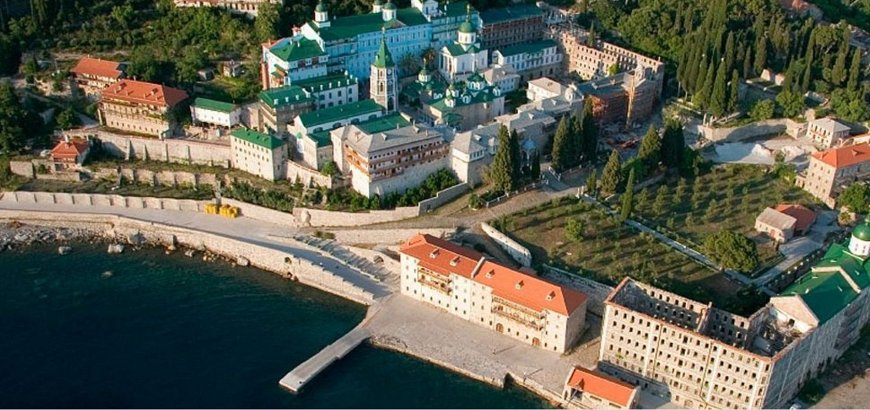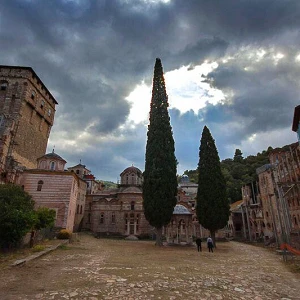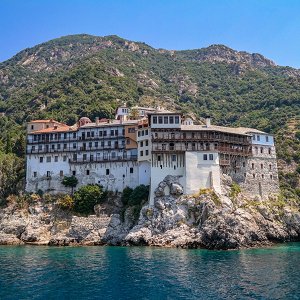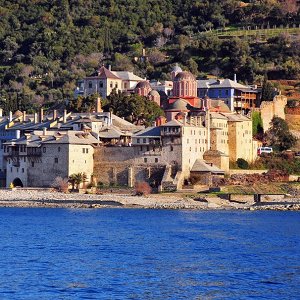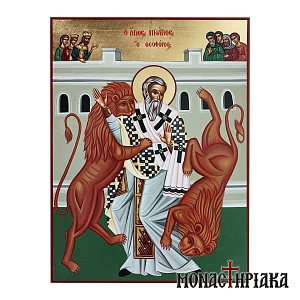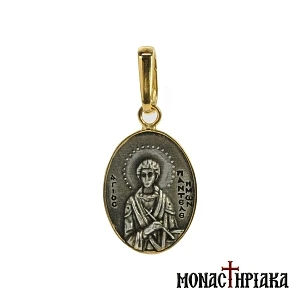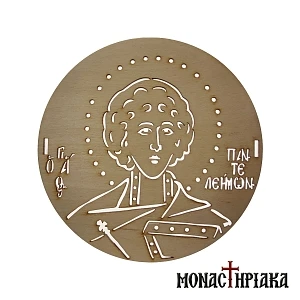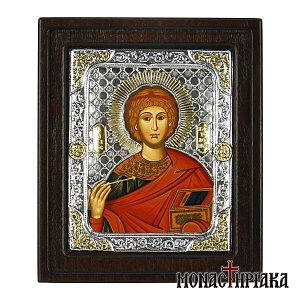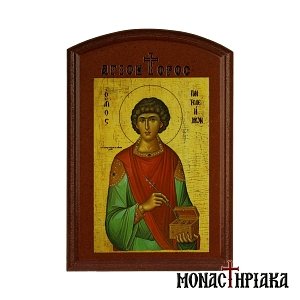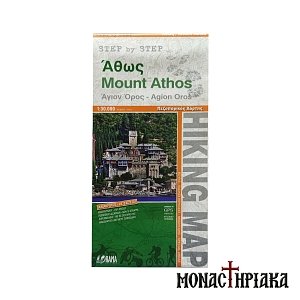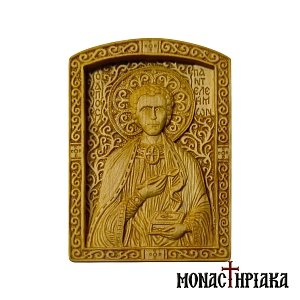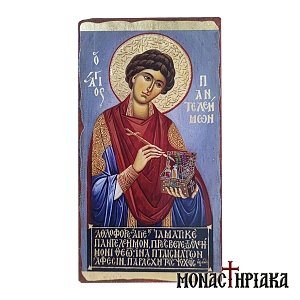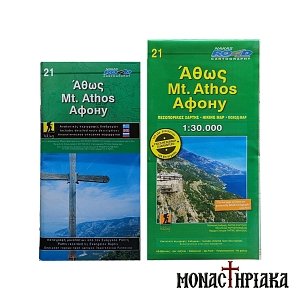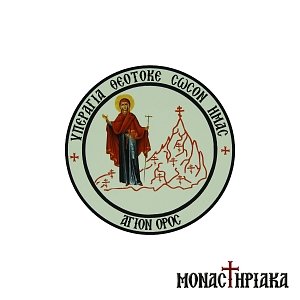Where is the Russian monastery and when does it celebrate?
The Holy Monastery of Saint Panteleimon, otherwise known as the Russian Monastery, is located in the southwest of the Athos peninsula, just before the port of Dafni and at a distance of one hour from the Holy Monastery of Xenophon.
The Monastery of Saint Panteleimon celebrates Saint Panteleimon on July 27 and ranks 19th in the hierarchy of monasteries.
When was the Russian monastery of Saint Panteleimon founded?
The current appearance of the Monastery, with abandoned multi-storey and majestic buildings, testifies to its rich and exuberant past. The history of the monastery dates back to the 10th century.
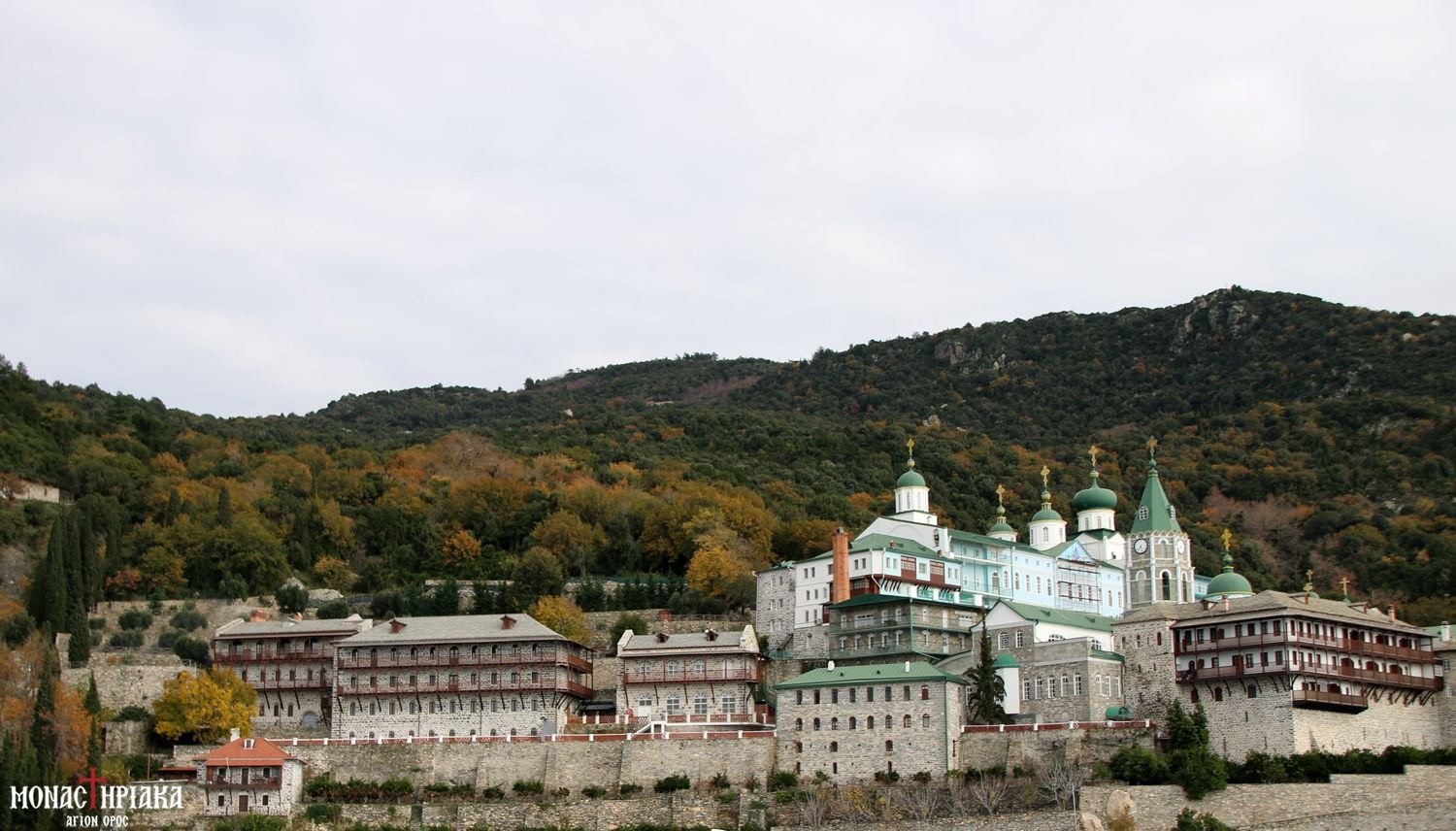
According to historical sources, around 1030, a brotherhood of Russian monks, together with their abbot, Lavrentios, settled in the Monastery of the Most Holy Theotokos of the Carpenter (identified with Skete Vogoroditsa). Over time, the number of monks grew, so in 1118 the Holy Synod of Mount Athos granted them the almost destroyed Monastery of Thessaloniki.
In the middle of the 12th century the brotherhood was transferred to the Thessaloniki Monastery which was dedicated to Saint Panteleimon. In this location the brotherhood remained for about seven centuries, until 1765.
The Holy Monastery of Saint Panteleimon over the centuries
Unfortunately, information about the activity of the Monastery during the 12th and 13th centuries is limited, as a devastating fire destroyed almost all historical evidence.
The first confirmed testimony about the activity and the ownership status of the Panteleimon Monastery is found in a gold bullion of the emperor Andronikos II Palaiologos. At the same time, we know that until 1497 the majority of the monks who lived in the monastery were of Greek origin.
Until the 15th century, Serbian rulers and emperors made significant donations to the Monastery, bringing about great growth. At the beginning of the 16th century, a great wave of Russian monks begins, which is accompanied by donations from the Tsars of Russia. However, in 1626, a financial crisis broke out and the administration of the Monastery was taken over by the central administration of Mount Athos.
In the 18th century the Russo-Turkish wars brought about a decrease in the number of Russian monks, and the monastery was then mainly dominated by Greek, Bulgarian and Serbian monks.
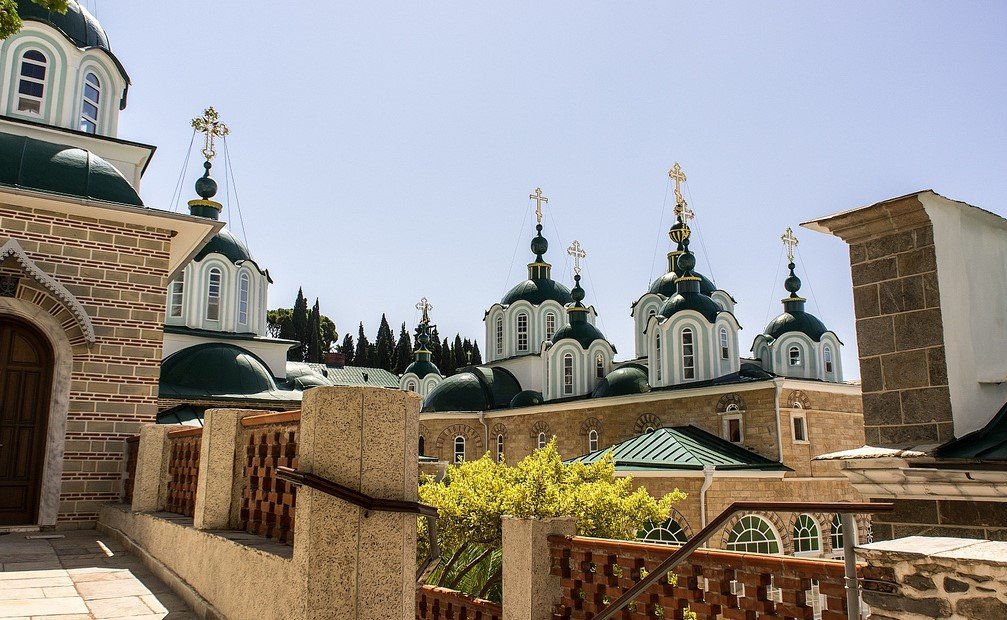
The new phase of the Monastery of Saint Panteleimon and the new location
In 1735, the Monastery of Saint Panteleimon enters a new phase. The management passes to a Greek abbot and it is decided to build the Monastery in a new location. Thus, Greek and Russian monks begin the reconstruction of the new Monastery in 1765.
The new location of the monastery is now on the coast, in a location where there was a small monastery from 1676, founded by the Bishop of Ierissos, Christoforos. It is characteristic that the inscription at the entrance of the temple "the chosen Russian", dates from that period.
The donations from the Phanariot family of the Kallimachis
The Russian monastery managed to be reconstructed and revived with the rich donations of the Phanariot family of the Callimachis, especially with the intervention of the Moldavian ruler John Callimachus (18th century) and Scarlatos Callimachus (18th-19th century). Thus, in 1806, Patriarch Kallinikos V' issued a seal, in which the Monastery is described as an "authentic community of the Kallimachides".
After the departure of the Turks, the Monastery continued its reconstruction process with abbot Gerasimos from Drama, a man who stood out for his virtue. In 1835, during his abbotship, the first Russians arrived, after their long absence.
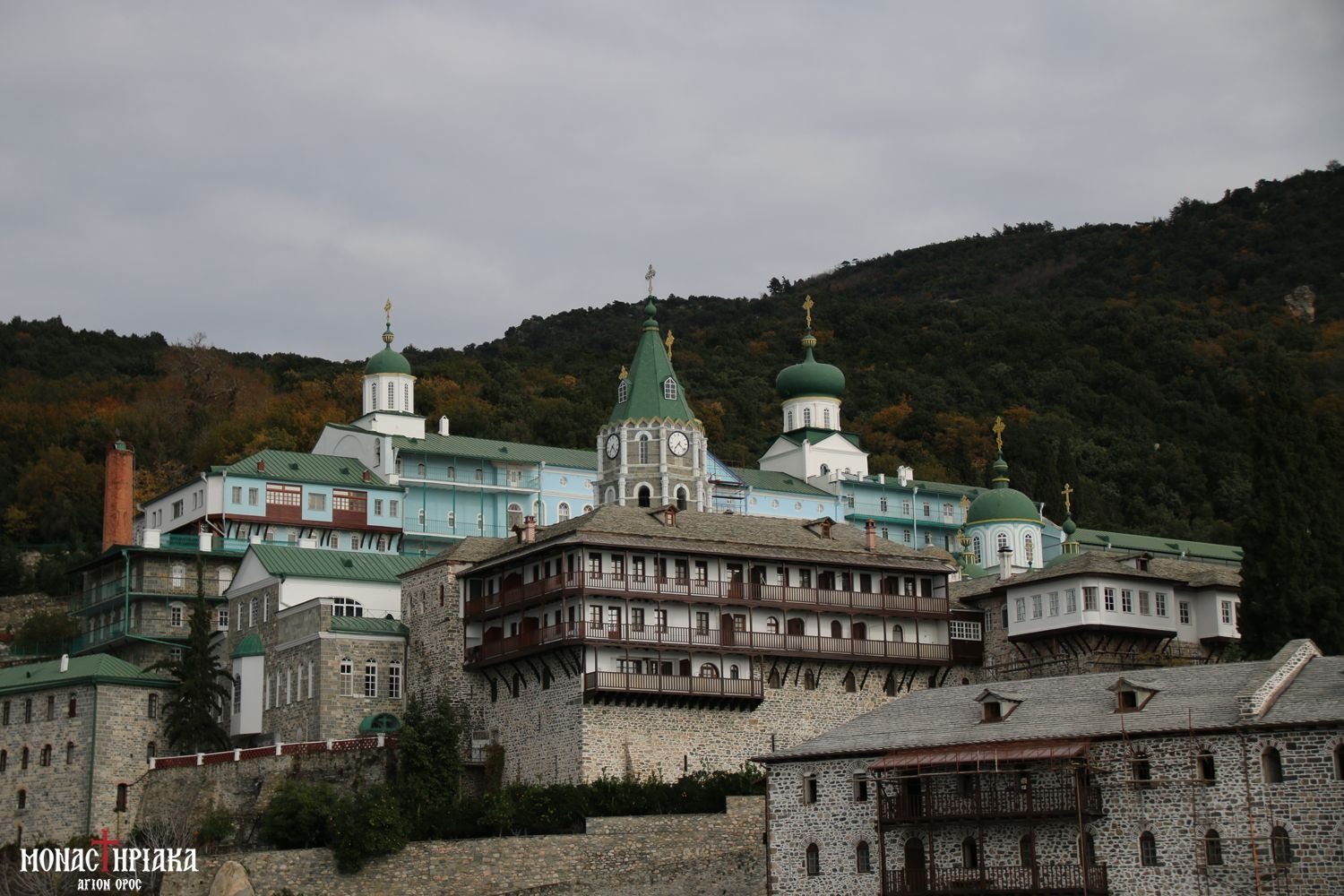
For the first time a Russian abbot and Liturgy in two languages
Thus, in 1875 a Russian abbot was elected for the first time and the Divine Liturgy was now sung in both languages. Consequently, many tsars of Russia donated large sums of money for the strengthening and expansion of the Monastery, as well as to Hermitages abandoned by Russian monks.
However, the mass entry of Russians into the Monastery of Saint Panteleimon slowly caused an imbalance in the numerical proportions of Greeks and Russians, with consequent tensions. The monks of Russian nationality in 1895 reached a thousand, while until 1913 they were on an upward trend.
The riot with the heresy of the name worshipers that developed in the Monastery, led many monks into exile. Then, with the Revolution of 1917, the continuous attraction of Russian monks was finally stopped.
The facilities of the Monastery of Saint Panteleimon and the largest bells on Mount Athos
The Church of the Monastery was built in the period 1811-1821 and is dedicated to Saint Panteleimon (July 27). The frescoes inside the Church are of Russian style, while the Bank was built in 1892 and frescoed in 1897.
Famous are the bells of the monastery, which in total weigh more than twenty tons! The heaviest bell of Mount Athos is located in the Russian monastery, it weighs thirteen tons and has a diameter of 2.70 meters.
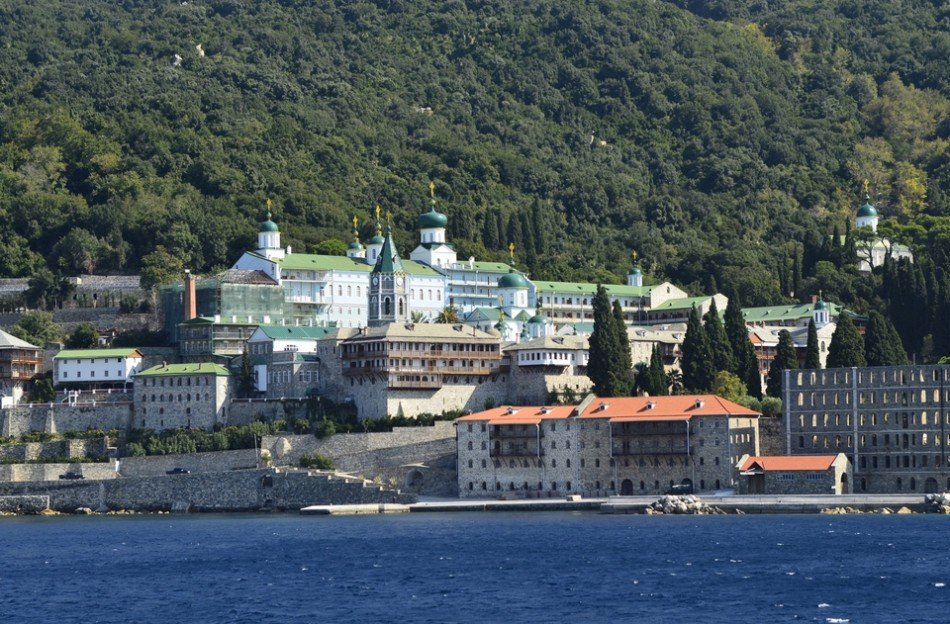
The Relics and the Library of the Monastery of Saint Panteleimon
The relics of the Monastery of Saint Panteleimon include many valuable ecclesiastical utensils, vestments and portable icons. Most are gifts from the Tsars, but unfortunately, the most recent fire in 1968 destroyed half of the Monastery.
In addition, elaborate crosses, reliquaries, icons and a piece of Sacred Wood are stored in the monastery's sacristy. The icons of the Virgin Mary from Jerusalem, as well as of John the Baptist stand out.
The most important icon of the monastery is the miraculous icon of Saint Panteleimon, which is located inside the Church of the Monastery and comes from the settlement of Xylourgos since 1030.
The library of the Monastery houses about 1,320 manuscripts, of which 600 are Slavic, and over 20,000 printed materials.
The Russian monastery held shares in many parts of the Russian land. On Mount Athos it has 5 Cells, 2 Sketes, about 20 chapels and 20 chapels.
Contact with Monastery of Saint Panteleimon:
Phone: +30 23770 23252, +30 23770 23252
Email: [email protected]
